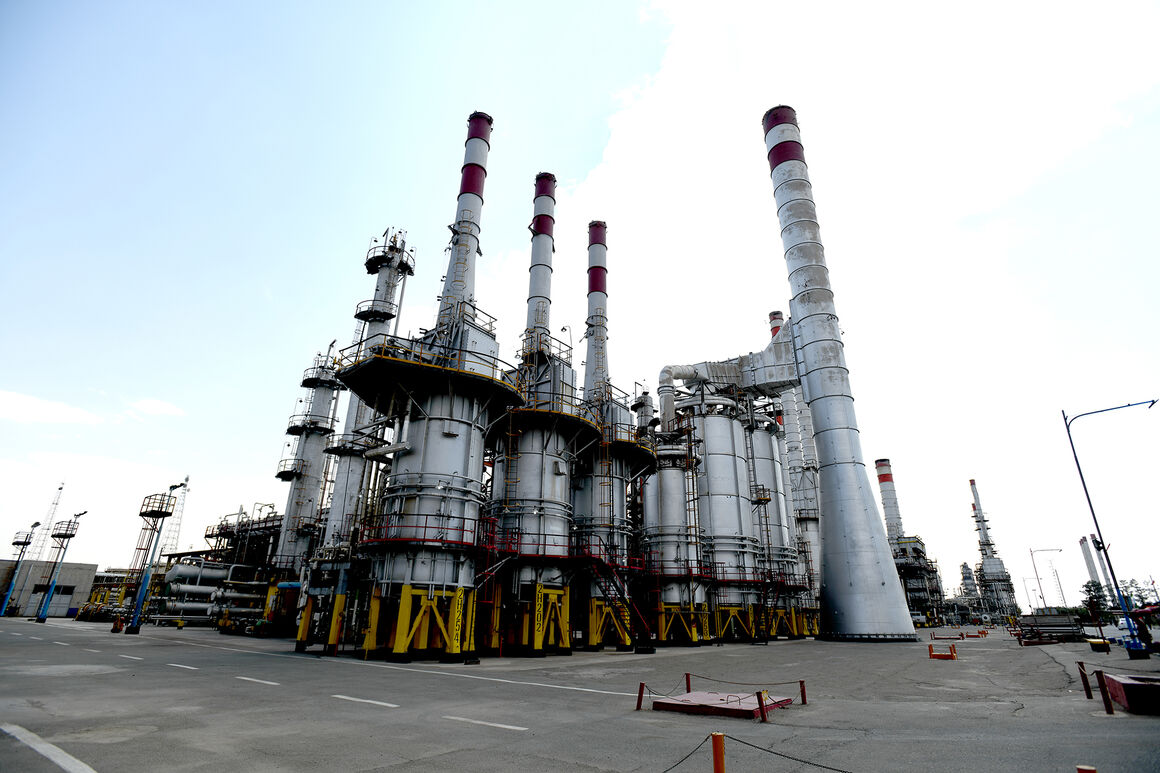The process partially dehydrogenates paraffin, isoparaffin, and cyclic naphthene and converts them into high-octane aromatics. In an interview with “Iran Petroleum”, Hamed Armanfar, CEO of the Tehran refinery, speaks about projects envisaged at the refining facility.
What measures are underway on the path toward integrating a petrochemical plant into the Tehran oil refinery?
Moving towards integrating petrochemical plants may be the most significant project in the future outlook of the Tehran refinery. Experts predict that petroleum products consumption will go on the decline as of 2035, as a result of which we would have to move in such a direction, in which case we would have to abandon the fuel-based model and brace for the profit-based model. To that end, we are planning to acquire Shazand refinery. In the future, the output of the RFCC and RCD units would be cracked gasoline, which is planned to serve as feedstock for olefin plants. Then, we will enter the petrochemical phase, which would have two advantages for us; we would no longer be fuel-dependent and we would provide feedstock for petrochemical plants. The Shazand petrochemical plant is the closest liquid fuel petrochemical plant to the Tehran refinery with diverse products. The infrastructure for the pipeline is also ready and we can use it. The project would have big advantages for the Tehran refinery and Shazand petrochemical plant whose feedstock would be guaranteed. We can purchase it in the current calendar year and we hope to finalize it. Meantime, the normal hexane solvent unit project is envisaged to recover normal hexane free of aromatics and benzene, using isomerization byproducts. The project has been awarded to capable Iranian manufacturing companies with a capacity of 2 tb/d of 52% and 85% grades. It is forecast to come online sooner than scheduled, which is next calendar year.
Would you please tell us about the project for upgrading fuel oil quality?
Studies for the fuel oil quality upgrade will be conducted by the best-known local knowledge-based companies. We have reviewed about 11 projects regarding fuel oil quality upgrade and we have entered into a contract with a company. We have completed its feasibility studies and we are entering the phase of detailed and basic design, as well as technical know-how licensing. Gasoil accounts for about 35% of the refinery’s products, for which development projects have been done. On average, 14 ml/d of Euro-5 gasoil (sulfur content below 50 ppm) is produced at the Tehran refinery, which is instrumental in mitigating air pollution in Tehran, whose gasoil needs are entirely supplied by the refinery. Gasoline makes up about 13% of the Tehran refinery’s output, whose sulfur content is up to Euro standards. For this purpose, the CCR project at this refinery was designed and the ground was broken for it in April 2021. Tehran refinery also produces naphtha, which would be converted into gasoline in the new unit. The refinery is currently producing 6.5 ml/d of gasoline, which will reach 8 ml/d after new projects become operational.
Where does the CCR project stand now?
It has had 52.5% physical progress. The initial estimate for investment in this project stands at about €280 million. We’ve never sought to pocket profits only. The main objective of projects at the refinery has been to upgrade the quality of products and none of the Tehran refinery projects has sought quantitative increase.
What’s the share of local manufacturers in the Tehran oil refinery’s activities?
In a bid to realize its self-sufficiency objectives in the face of shocks from sanctions and also to accelerate the domestic manufacturing of strategic refining equipment, the Tehran oil refinery has focused on local manufacturing since a couple of years ago. As far as we know, about 80% of the items required by the Tehran refinery (including spare parts, instrumentals as well as electrical, mechanical, and chemical parts) are sourced locally.
Could you tell us about the plans in the knowledge-based sector at this refinery?
Preparing the ground for cooperation with knowledge-based companies is a major objective of the Tehran oil refinery. Technology transfer and locally developing catalysts, chemicals, and refining equipment continue to top the agenda of the refinery. Meantime, the refinery is always helped by knowledge-based companies. Inking MOU with the Iran University of Science and Technology to use technological and innovative services to build a pilot to produce 1 tonne a day of CS2 as the strategic material for tire making, using the sulfur produced at the Tehran refinery for completing the sulfur value chain is among issues associated with supporting knowledge-based companies.
Would you please explain about environmental projects at this refinery?
The Tehran refinery’s environmental projects are divided into 6 categories; air pollution and climate change management, water and wastewater management, waste management, soil pollution and underground water control, environmental risk management, and urban community projects. Designing, engineering, manufacturing, and installing the CCR heavy naphtha refining, reducing benzene and deethanization of LPG, environmental impact assessment of the RCD unit, and fuel oil upgrading are among the environmental measures underway at this refinery.
What has the Tehran oil refinery done for higher-value products?
In line with upgrading the chain of high-value products and reducing sulfured fuel oil, the Tehran oil refinery is conducting comprehensive engineering studies. It has also taken measures to diversify its special products like carbon dioxide, azote, and refining solvents. Talks have been also started for supplying electricity to adjacent industries. A hybrid cooling tower is also planned to be built at the Tehran refinery, which would significantly cut water consumption at the refinery.


Your Comment